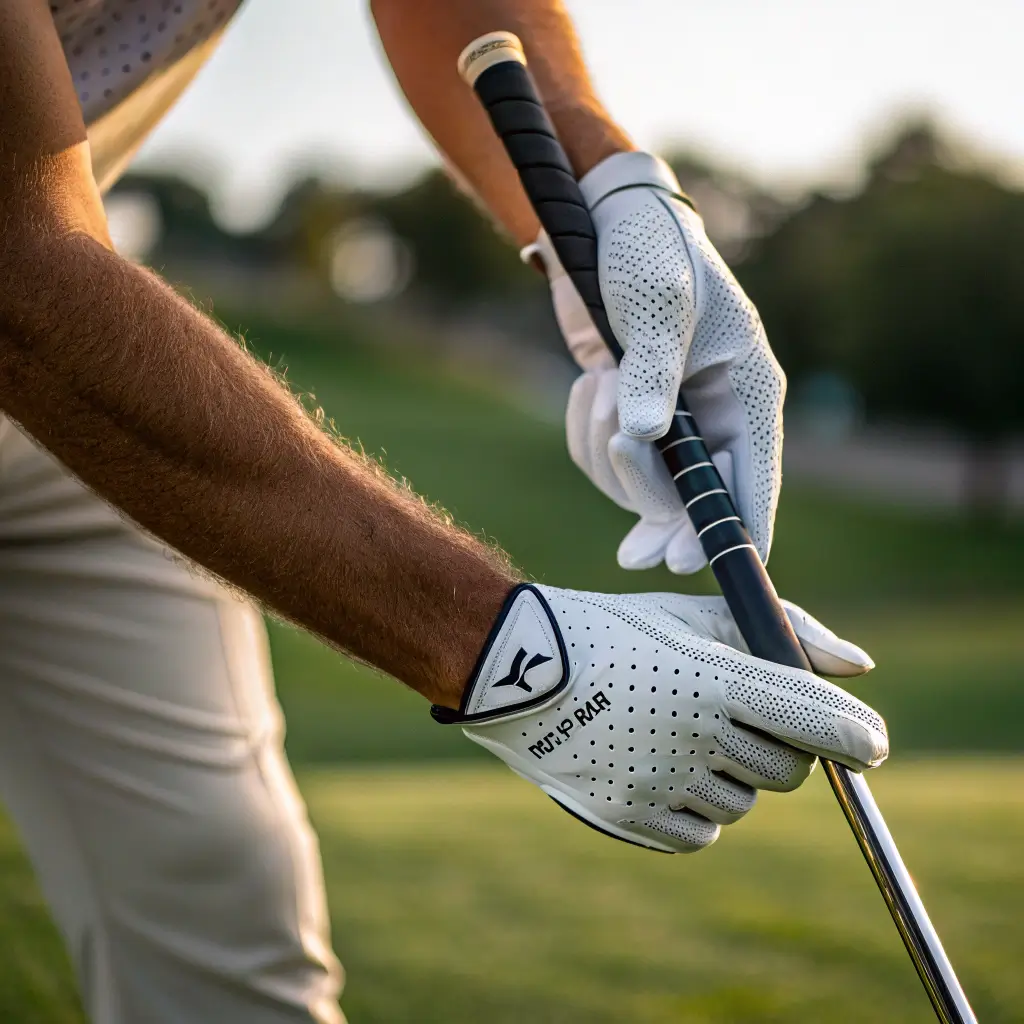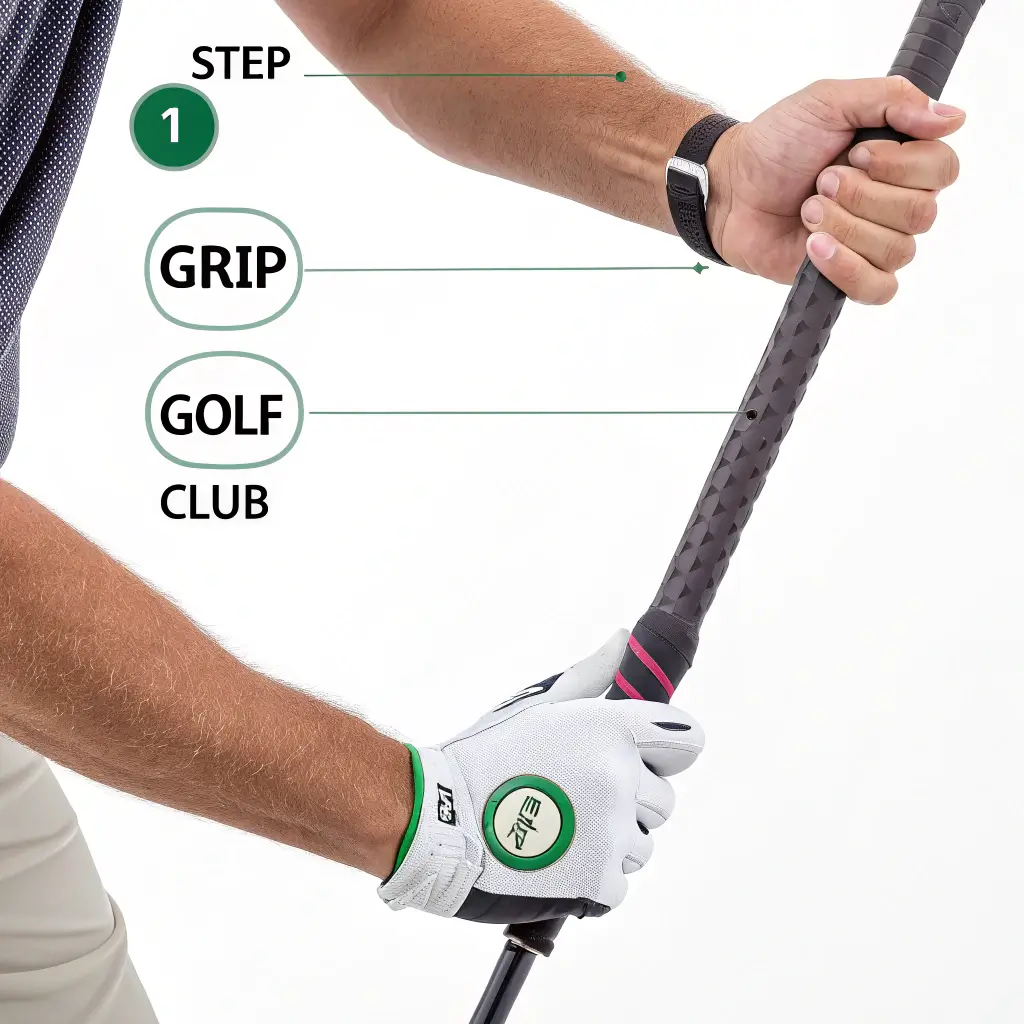Gripping a golf club properly is essential for every golfer, from beginners to seasoned pros. A solid grip influences your swing, accuracy, and overall performance on the course. Understanding how to grip a golf club can significantly enhance your game. In this guide, we will explore the importance of a proper grip, common mistakes to avoid, and effective drills to improve your grip technique.
- Understanding the Importance of a Proper Grip
- Why Grip Affects Your Swing
- Common Grip Mistakes to Avoid
- The Overlap Grip
- The Interlock Grip
- The Ten-Finger Grip
- Choosing the Right Club
- Positioning Your Hands
- Finding the Right Pressure
- Adjusting Your Grip for Different Shots
- Grip Strengthening Exercises
- Practice Drills for Consistency
- Using Video Analysis
- Grip Sensors and Apps
Understanding the Importance of a Proper Grip
A proper golf grip is the foundation of a successful swing. It affects your control, power, and consistency. When you grip the club correctly, you can achieve better alignment and a more fluid swing. The right grip allows for optimal clubface control, which is crucial for hitting accurate shots. Additionally, a good grip helps in maintaining the correct grip pressure, which can influence the trajectory and distance of your shots.

Why Grip Affects Your Swing
The grip is the only point of contact between you and the golf club. If your grip is too tight or too loose, it can lead to inconsistent swings. A tight grip can restrict your wrist movement, while a loose grip may cause the club to slip during your swing. Finding the right balance in grip pressure is vital for a smooth and effective golf swing. Moreover, different golf grip types, such as the interlocking, overlapping, or ten-finger grip, can also impact your swing mechanics. Experimenting with these techniques can help you discover what works best for your style.
Common Grip Mistakes to Avoid
Many golfers make common grip mistakes that hinder their performance. One frequent error is gripping the club too tightly, which can lead to tension in your arms and shoulders. Another mistake is using the wrong grip size; a grip that is too small or too large can affect your control. Additionally, failing to align your hands correctly on the club can result in poor shot accuracy. To improve your grip, focus on maintaining a relaxed grip pressure and ensure your hands are positioned properly. Regular grip analysis can help identify and correct these mistakes.
Types of Golf Grips
Understanding the different types of golf grips is essential for improving your game. The grip is your only connection to the club, making it crucial for control and consistency. Here, we’ll explore three primary golf grip types: the overlap grip, the interlock grip, and the ten-finger grip. Each has its unique advantages and is suited for different playing styles and preferences.
The Overlap Grip
The overlap grip, also known as the Vardon grip, is popular among many professional golfers. In this grip, the little finger of the trailing hand overlaps the index finger of the lead hand. This grip promotes a unified feel and helps maintain control during the swing. It’s ideal for players with larger hands, as it allows for a more secure hold on the club. To execute the overlap grip, place your lead hand on the club first, then position your trailing hand so that the little finger rests on top of the index finger. This grip can enhance your swing path and improve accuracy.
The Interlock Grip
The interlock grip is another common choice, especially among golfers with smaller hands. In this grip, the little finger of the trailing hand interlocks with the index finger of the lead hand. This connection can provide a more stable grip and is often favored by players who struggle with grip pressure. To use the interlock grip, start by placing your lead hand on the club, then interlock your little finger with your index finger of the trailing hand. This grip can help create a more cohesive swing and is beneficial for maintaining control throughout your shot.
The Ten-Finger Grip
The ten-finger grip, or baseball grip, involves all ten fingers on the club. This grip is often recommended for beginners or those with limited hand strength. It allows for a relaxed grip and can help with swing speed. To adopt the ten-finger grip, simply place both hands on the club without any fingers overlapping or interlocking. This grip can be particularly useful for players who struggle with grip pressure, as it encourages a lighter hold. While it may not be as common among advanced players, it can be effective for those just starting their golfing journey.
Step-by-Step Guide to Holding a Golf Club
Mastering how to grip a golf club is essential for improving your game. A proper grip can enhance your swing, increase accuracy, and boost confidence on the course. This guide will walk you through the key elements of gripping a golf club effectively.
Choosing the Right Club
Selecting the right club is the first step in achieving a proper golf grip. Different clubs have varying lengths and designs, which can affect your grip. Consider the following:
- Understand the purpose of each club: drivers for distance, irons for precision, and wedges for short game.
- Choose a club that feels comfortable in your hands.
- Pay attention to the club’s grip size; it should fit your hand without being too tight or too loose.
- Test different clubs to find the one that complements your swing style.
Positioning Your Hands
Proper hand positioning is crucial for a successful golf grip. Follow these steps:
- Start with your lead hand (left hand for right-handed golfers) on the club first.
- Place the club in the fingers, not the palm, for better control.
- Wrap your fingers around the grip, ensuring your thumb points down the shaft.
- Position your trailing hand (right hand for right-handed golfers) below the lead hand, overlapping or interlocking as preferred.
Finding the Right Pressure
Grip pressure can significantly impact your swing. Here’s how to find the right balance:
- Aim for a grip pressure that feels firm but not tense.
- Too much pressure can restrict your swing; too little can lead to a loss of control.
- Practice holding the club with varying pressures to find your sweet spot.
- Remember, maintaining consistent grip pressure is key to a reliable swing.
Adjusting Your Grip for Different Shots
Different shots require slight adjustments to your grip. Consider these tips:
- For a fade, weaken your grip slightly by rotating your hands counterclockwise.
- For a draw, strengthen your grip by rotating your hands clockwise.
- Use a lighter grip for delicate shots around the green.
- Practice these adjustments to become more versatile in your game.
Drills to Improve Your Grip
Improving your grip is essential for a successful golf swing. A proper golf grip can enhance your control and consistency on the course. Here are some effective drills to help you master your grip.
Grip Strengthening Exercises
1. **Wrist Curls**: Use a lightweight dumbbell. Sit on a bench, rest your forearm on your thigh, and curl the weight up using only your wrist. Aim for 3 sets of 15 reps.
2. **Grip Trainers**: Invest in grip trainers or use a tennis ball. Squeeze the ball for 10 seconds, then release. Repeat for 3 sets of 10 squeezes.
3. **Finger Extensions**: Use rubber bands around your fingers. Open your hand against the resistance of the band. This strengthens the muscles used in gripping the club.
4. **Forearm Planks**: Hold a plank position on your forearms. This builds overall grip strength and stability. Aim for 30 seconds to 1 minute.

Practice Drills for Consistency
1. **Grip Pressure Drill**: Practice swinging with varying grip pressures. Start with a light grip, then gradually increase pressure. Find the sweet spot that feels comfortable yet controlled.
2. **Alignment Stick Drill**: Place an alignment stick in the ground. Practice gripping the club while ensuring your hands are aligned with the stick. This helps with grip placement.
3. **Mirror Drill**: Use a mirror to check your grip. Ensure your hands are positioned correctly on the club. This visual feedback can help correct grip mistakes.
4. **One-Handed Swings**: Practice swinging with one hand at a time. This drill helps you focus on grip pressure and control with each hand individually.
Analyzing Your Grip with Technology
In today’s digital age, golfers can leverage technology to enhance their grip analysis. Understanding how to grip a golf club effectively is crucial for improving your overall performance. By utilizing video analysis and grip sensors, you can gain valuable insights into your grip techniques and make necessary adjustments.
Using Video Analysis
Video analysis is a powerful tool for golfers looking to refine their grip. By recording your swing from different angles, you can visually assess your grip position and pressure. Look for common golf grip mistakes, such as improper hand placement or excessive grip pressure. Analyzing your swing in slow motion allows you to pinpoint areas for improvement. Consider sharing your videos with a coach or using online platforms for feedback. This method not only enhances your understanding of grip dynamics but also helps in developing a proper golf grip.
Grip Sensors and Apps
Grip sensors and mobile apps are revolutionizing how golfers analyze their grip. These devices can measure grip pressure and provide real-time feedback on your grip size and technique. Many apps offer personalized recommendations based on your grip analysis, helping you identify the best golf grip types for your style. By tracking your progress over time, you can see how adjustments to your grip impact your golf swing. Integrating technology into your practice routine can lead to significant improvements in your game.
Conclusion: Mastering Your Grip for Better Performance
Mastering your grip is essential for achieving better performance on the golf course. A proper golf grip not only enhances your swing but also contributes to overall consistency. By understanding different golf grip techniques and avoiding common mistakes, you can set yourself up for success. Regular practice with grip drills can help reinforce good habits and improve your muscle memory. Remember, grip pressure plays a vital role in your swing; too tight can lead to tension, while too loose can cause a lack of control. As you refine your grip, consider using technology for ongoing analysis and feedback. This approach will help you adapt and evolve your grip as your skills improve. Ultimately, a well-analyzed and practiced grip can lead to lower scores and a more enjoyable golfing experience.
FAQs About Golf Grips
Understanding how to grip a golf club is essential for every golfer, especially beginners. Here are some frequently asked questions about golf grips that can help improve your game.
The ten-finger grip is often recommended for beginners as it provides a comfortable and secure hold. This grip allows for better control and is easier to master when starting out.
You should grip the club firmly but not too tight; a pressure level similar to holding a tube of toothpaste without squeezing it out is ideal. This balance helps maintain control without restricting your swing.
Yes, an improper grip can lead to misalignment and affect your swing path, resulting in hooks or slices. A proper golf grip is crucial for achieving a consistent and accurate swing.
It’s recommended to change your grip every 40-50 rounds or when you notice wear and tear. Regular grip maintenance ensures optimal performance and comfort during your game.
Grip size depends on your hand size; a proper fit will help you maintain control and comfort during your swing. Testing different sizes can help you find the best fit for your game.
